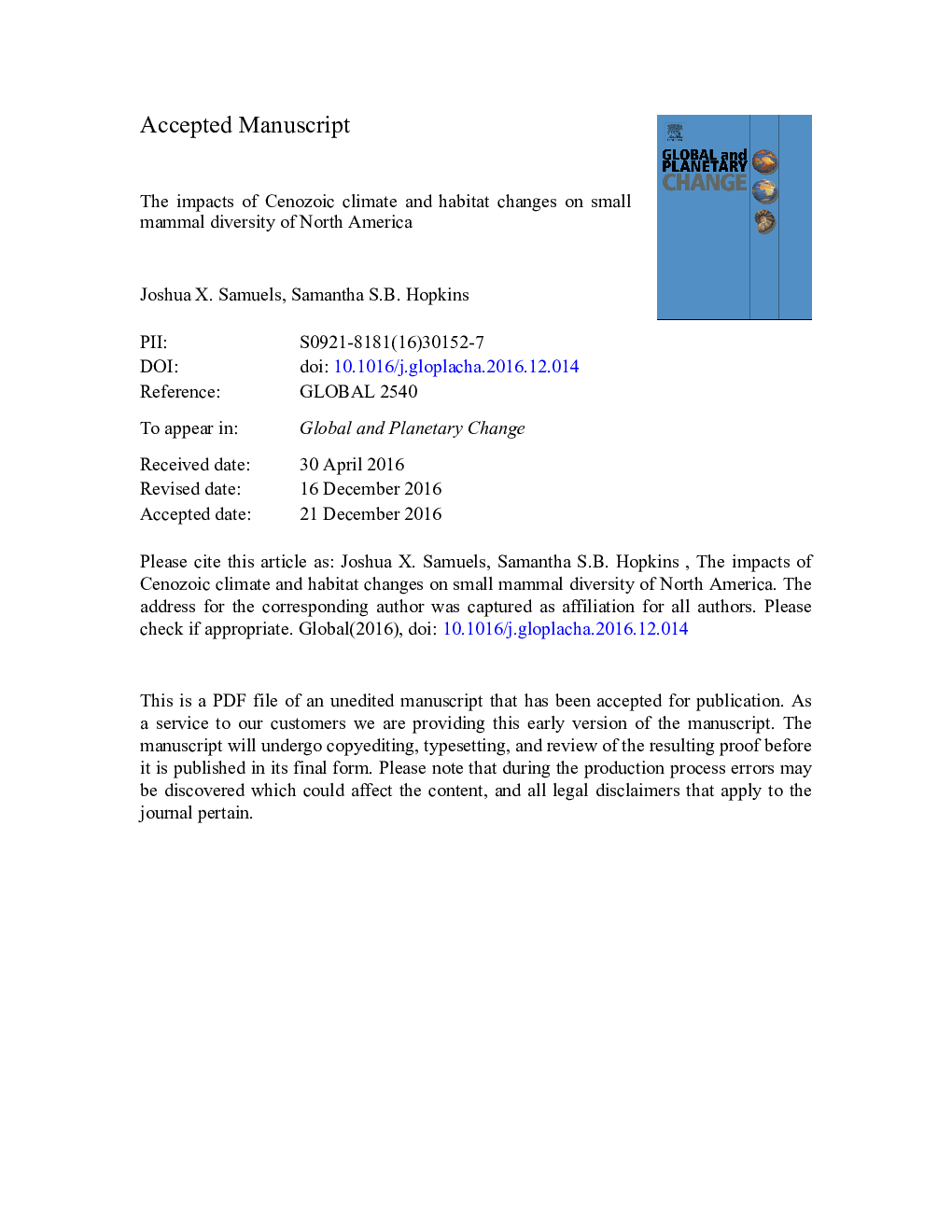| Article ID | Journal | Published Year | Pages | File Type |
|---|---|---|---|---|
| 5755294 | Global and Planetary Change | 2017 | 72 Pages |
Abstract
Analyses of these data found that rodent and lagomorph community structure changed dramatically through the Cenozoic, and shifts in diversity and ecology correspond closely with the timing of habitat changes. Cenozoic rodent and lagomorph species diversity is strongly biased by sampling of localities, but sampling-corrected diversity reveals diversity dynamics that, after an initial density-dependent diversification in the Eocene, track habitat changes and the appearance of new ecological adaptations. As habitats became more open and arid through time, rodent and lagomorph crown heights increased while burrowing, jumping, and cursorial adaptations became more prevalent. Through time, open-habitat specialists were added during periods of diversification, while closed-habitat taxa were disproportionately lost in subsequent diversity declines. While shifts among rodents and lagomorphs parallel changes in ungulate communities, they started millions of years earlier than in larger mammals. This is likely a consequence of the smaller mammals' greater sensitivity to environmental changes and more rapid evolution. These results highlight the importance of examining understudied members of vertebrate faunas for understanding the evolution of terrestrial communities through time.
Related Topics
Physical Sciences and Engineering
Earth and Planetary Sciences
Earth-Surface Processes
Authors
Samuels Joshua X., Hopkins Samantha S.B.,
